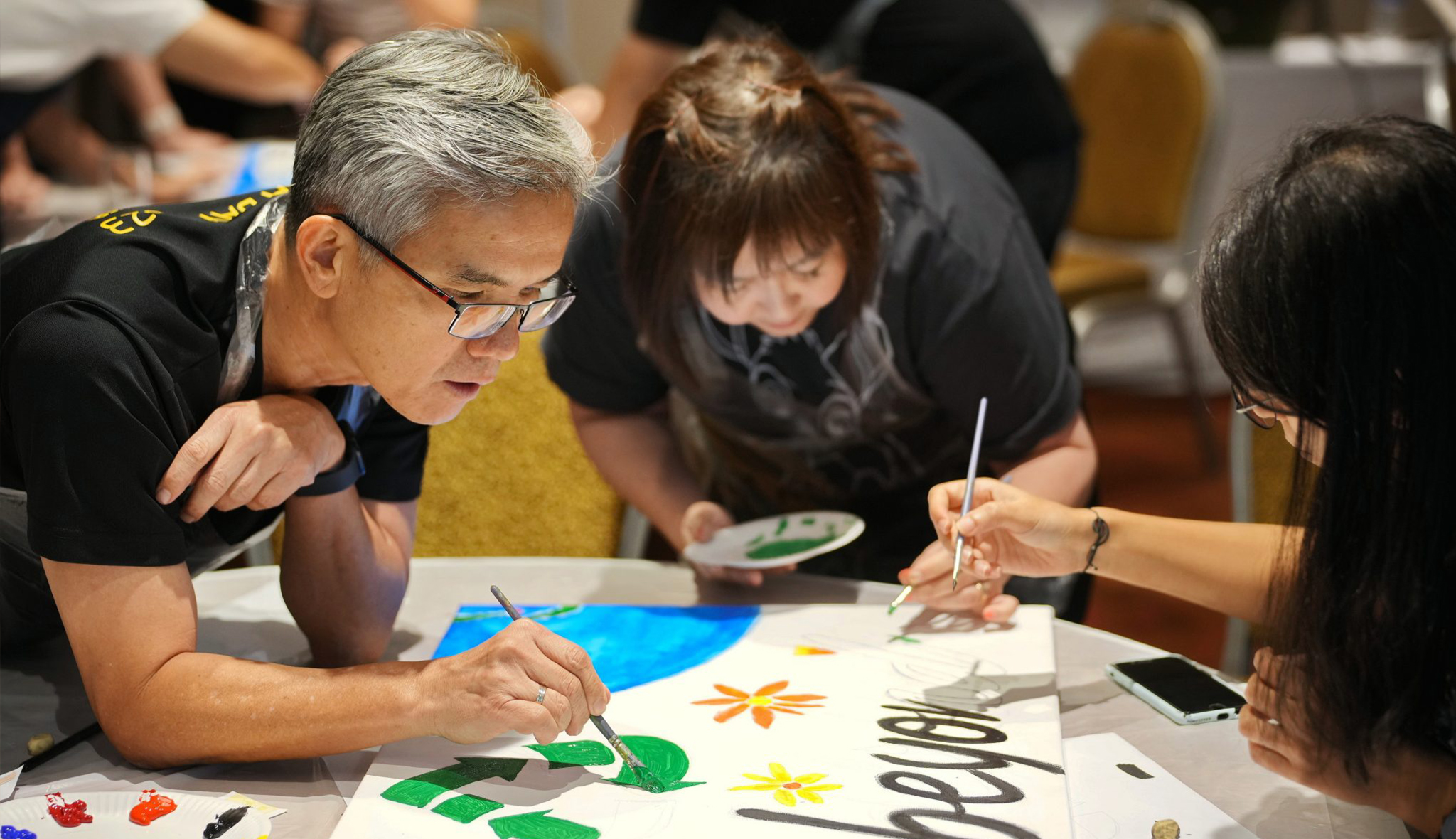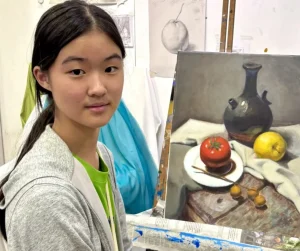Acrylic Painting on Canvas Team Bonding Art Jamming Singapore Visual Arts Centre

























Figure drawing, otherwise known as nude life drawing, is defined as the drawing of the human form in various shapes and postures, in different drawing media. Knowledge of figure drawing is foundational in classical art and vital for capturing the nuances of human anatomy, movement, and personality.

Frauengruppe (1904) by Lovis Corinth
Figure drawing can be represented expressively, loosely, or in a highly detailed manner or photorealistic. Artists are able to take a wide variety of approaches to human figure drawing, from creating works from photographic references, to creating works from life models, and even from imagination.

Claudia by Robert Zeller
When creating works from life models, one would be able to create artistic renderings that are less “flat”, more accurate and more true to reality. The visual reference of having a life model can allow one to produce works that are more anatomically accurate, with proportions more easily rendered as opposed to photographic references. Artists can also record the dynamics and movement of the human body more holistically as compared to drawing with a still image reference.

The preferred form of media when it comes to nude life drawing for most artists are dry mediums such as pencil, graphite or charcoal. Pencils and charcoals are most preferred as they adhere more loosely to the paper, allowing one to manipulate by erasing mistakes with ease. Furthermore, they can be easily preserved on paper, simply by spraying fixative on top of the drawing.
Watercolour nude life paintings have also gained much traction in recent years, with more people being interested in capturing the beauty of the nude with subtle colours. Usually, artists like to begin with a sketch using graphite pencil, and with the line work, watercolour ink washes are applied to the sketch.


Male Nude (between 1854-1857), Auguste Rodin
When referencing to a nude life model, every pose offers a unique composition – shadows, skin textures, movement, perspectives and gestures. With the live model, we are expected to draw and paint at a faster rate compared to referencing to a still photograph. This allows us to train our eyes to understand the nuances of natural weight and balance and capture proportion quickly.
Figure drawing and painting in a studio setting typically involves a group of students sitting around a model in a semi or full circle. Every student will be offered a different angle, with no 2 students having the same angle and perspective as another. Thus, each student’s drawing will reflect the artist’s unique perspective and location relative to the model.
In some classes, the nude model would also be interacting with props such as tables and chairs. In most nude life classes, a couple of periodic poses are expected, since it requires lots of energy for the model to pose and remain perfectly still for extended periods of time.
Learning never exhausts the mind.
– Leonardo Da Vinci

If you’re looking to sharpen your skills at figure drawing, look no further than our new art course “Study of Anatomy – The Art of Figure Drawing”. This new six-session course aims to provide you with an in-depth delve into gestural and observational figure drawing, as well as deep knowledge regarding the experience of using a live model reference to draw a wide variety of perspectives and poses, under the guidance of our professional instructors!
Course Details
$450nett per pax for 6 sessions
Thursdays 7:30 – 10pm
First Class commences on 15 May 2025!
Click here to find out more about The Study of Anatomy – The Art of Figure Drawing!
At Visual Arts Centre, our nude life drawing and painting sessions are run by a professionally trained artist in a fun and relaxing environment. These sessions are run in our Studio, the perfect atmosphere with an appropriate selection of music, to help you relax and get into the state of drawing.
If you are interested in learning how to do some watercolour nude life painting, please feel free to join us for our Study of Anatomy – Art of Figure Drawing Course for a deep dive Otherwise, traditional medium such as pencils and charcoal would still be provided as usual.
Click here to find out more or register for our nude life drawing and painting lessons!
Visual Arts Centre is also running a special promotion – 4 sessions of Nude or Portrait Life Drawing class pass for only $280nett/pax.
Click here to register for this special promotion!
If you are ready to pick up a pencil or brush to start your artistic journey in nude figure drawing or painting, feel free to click here to find out more, or drop us an email at info@visualartscentre.sg or a call at 6733 2155 / 6255 0711 and we will be more than ready to assist you!
Click and get to our WhatsApp
Embark on a captivating journey into the vibrant world of digital art! Our Foundation in Digital Art workshop invites budding creatives aged nine and above to unleash their imagination and hone their artistic skills in a dynamic, supportive environment. From mastering basic digital tools to crafting mesmerizing digital masterpieces, children will explore a spectrum of techniques guided by seasoned mentors. Through hands-on activities and interactive sessions, participants will discover the endless possibilities of digital expression while fostering creativity and critical thinking. Join us for an exhilarating adventure where young artists transform ideas into stunning visual realities, igniting a passion for digital art
In the Batik Introduction Handkerchief Painting workshop, participants will learn the traditional art of batik, a wax-resist dyeing technique originating from Indonesia. The workshop begins with a brief history and overview of batik, highlighting its cultural significance and various techniques. Participants will then observe a demonstration of applying wax with tjanting tools and dyeing the fabric. Following the demonstration, each participant will design and create their own batik handkerchief, applying wax to create patterns and then dyeing their fabric. The workshop concludes with a group discussion, allowing participants to share their creations and reflect on their learning experience.